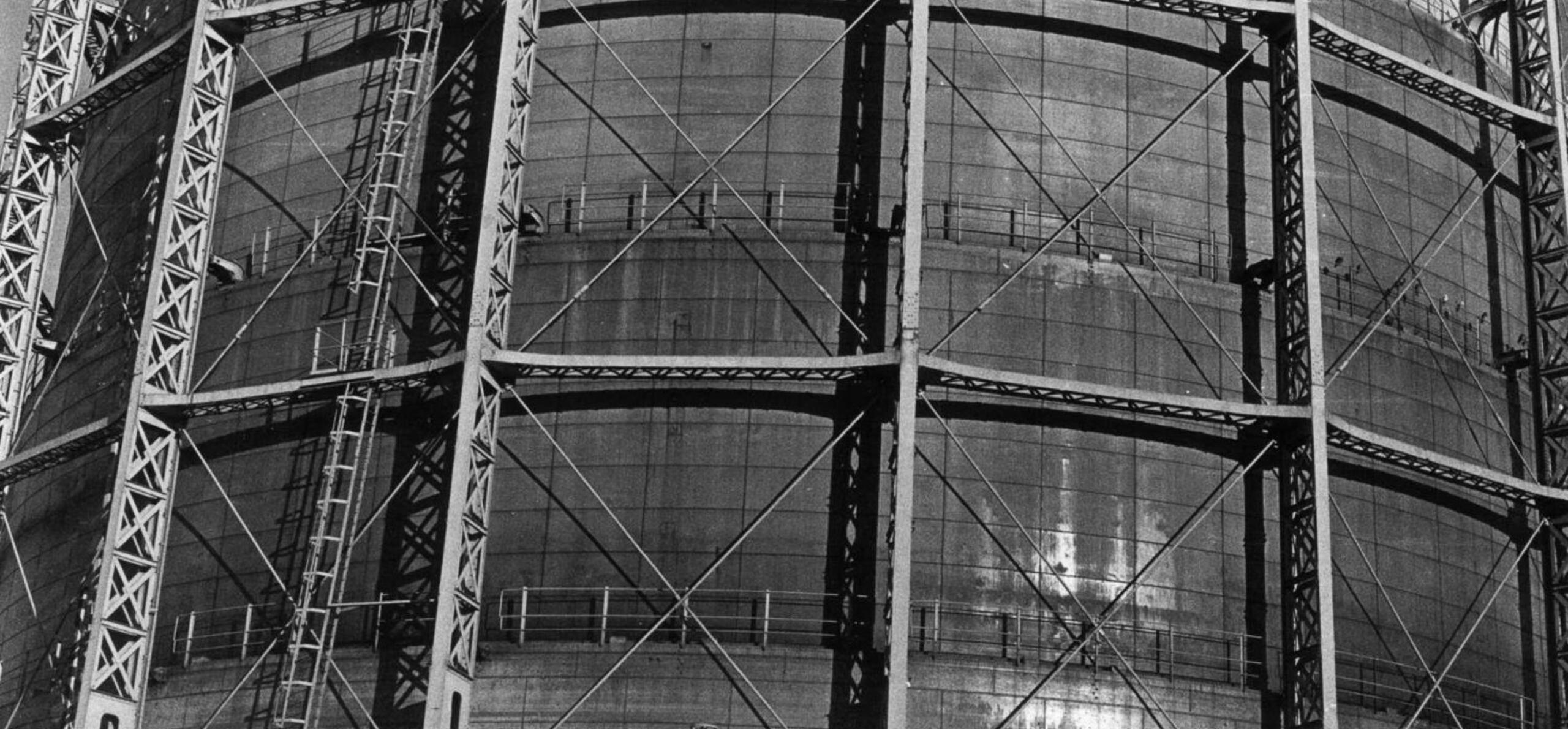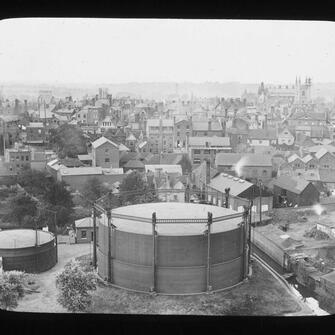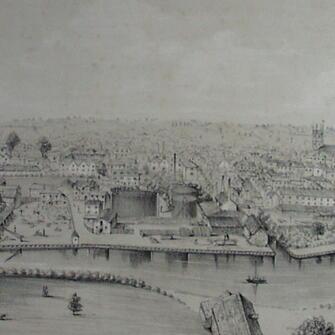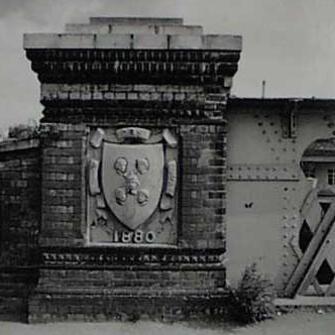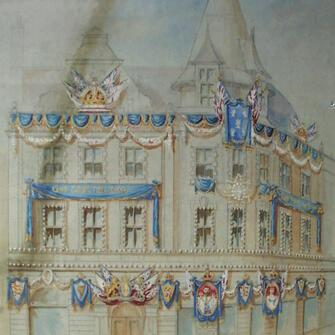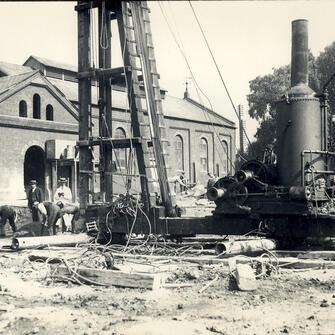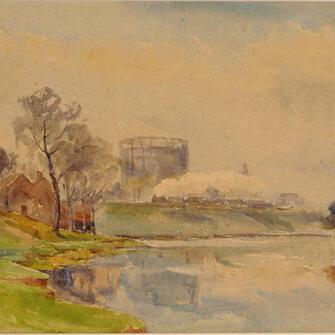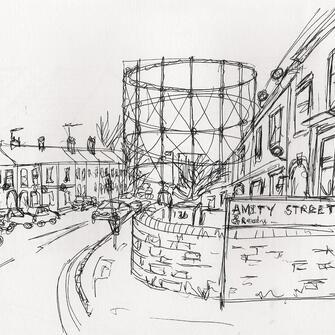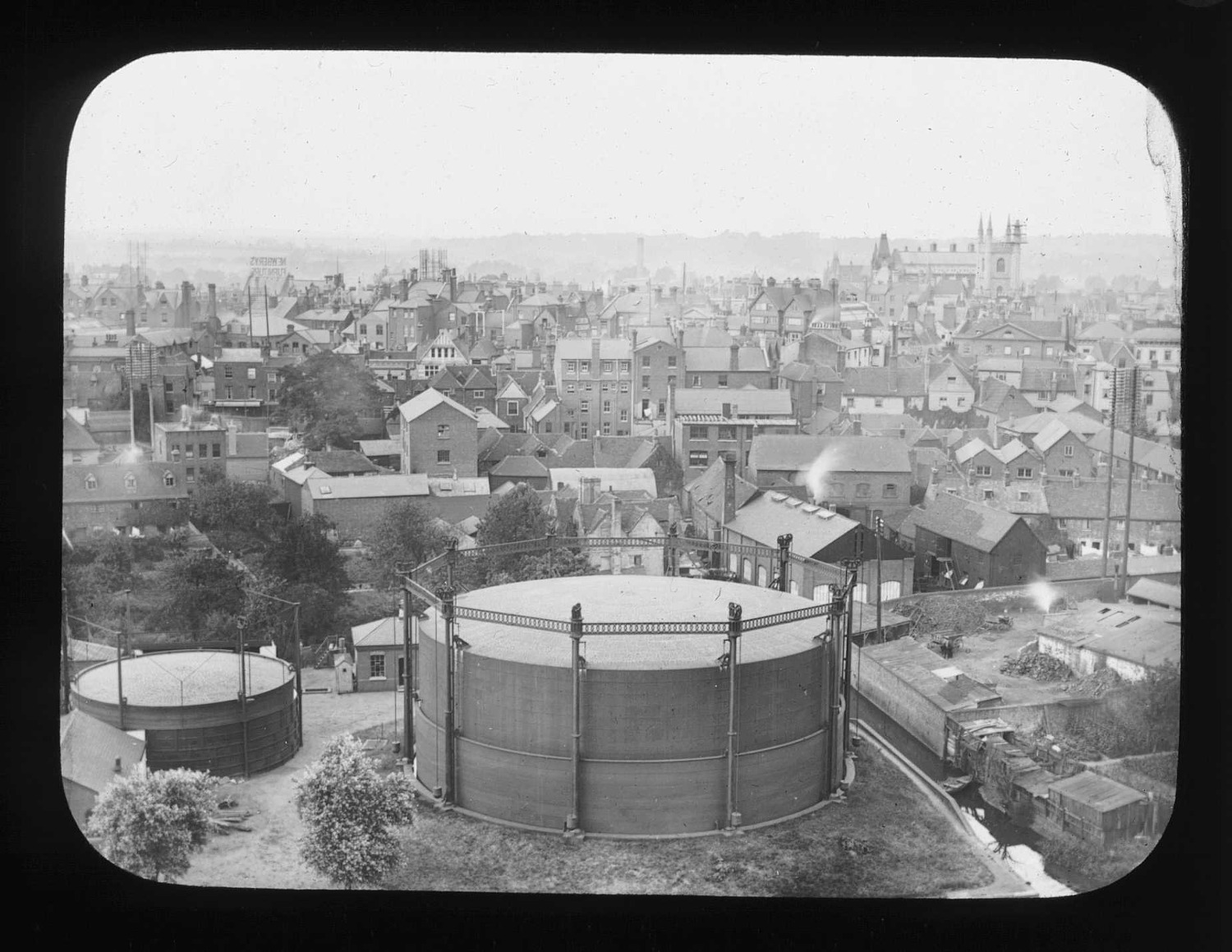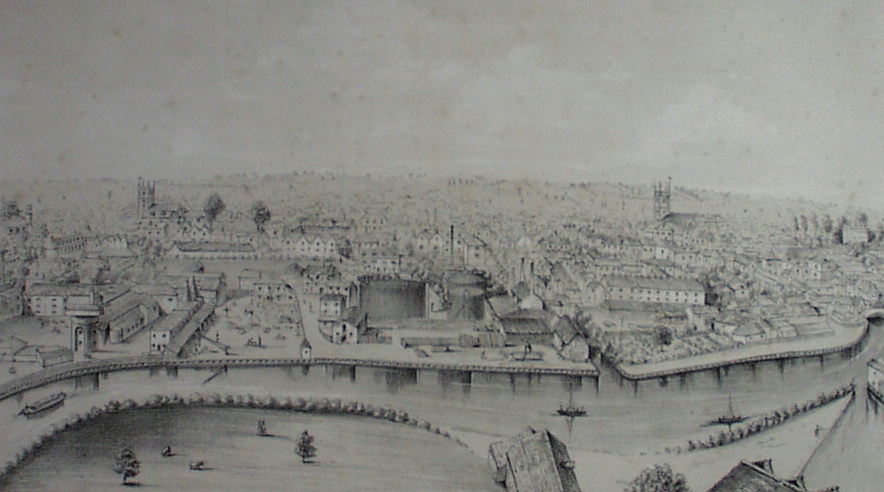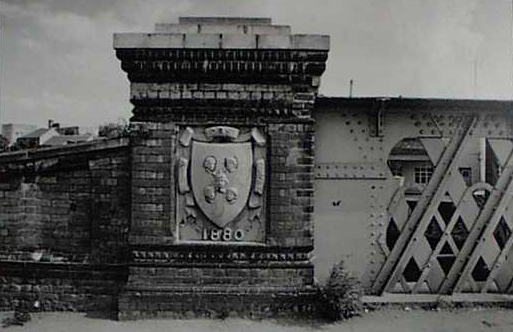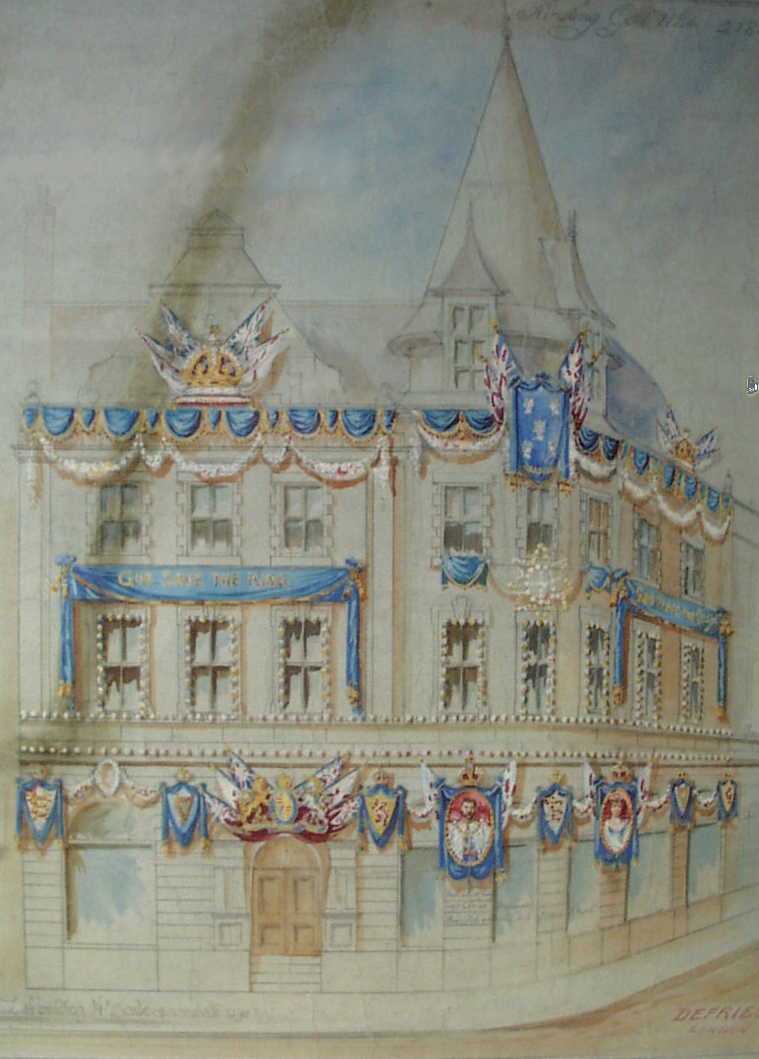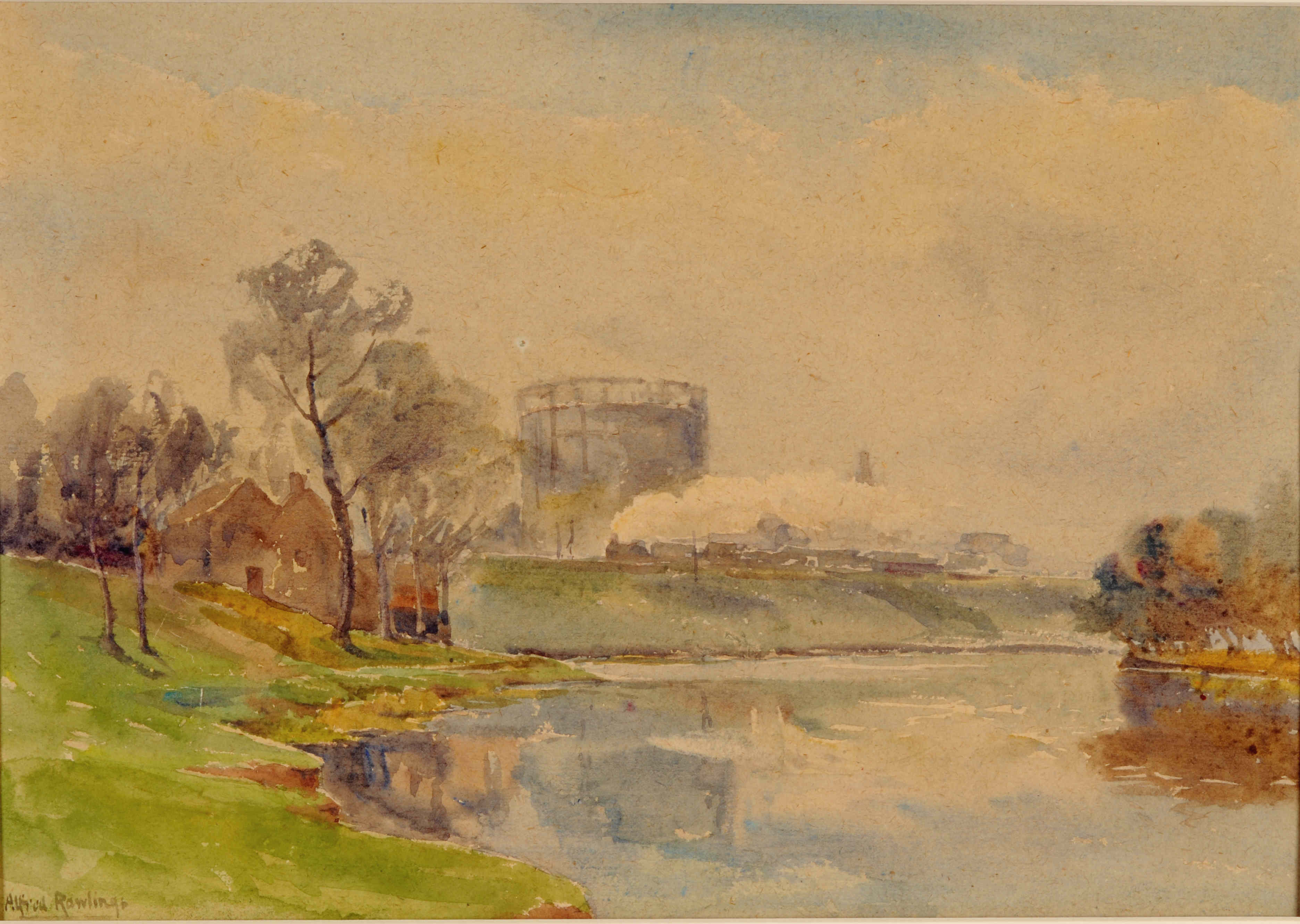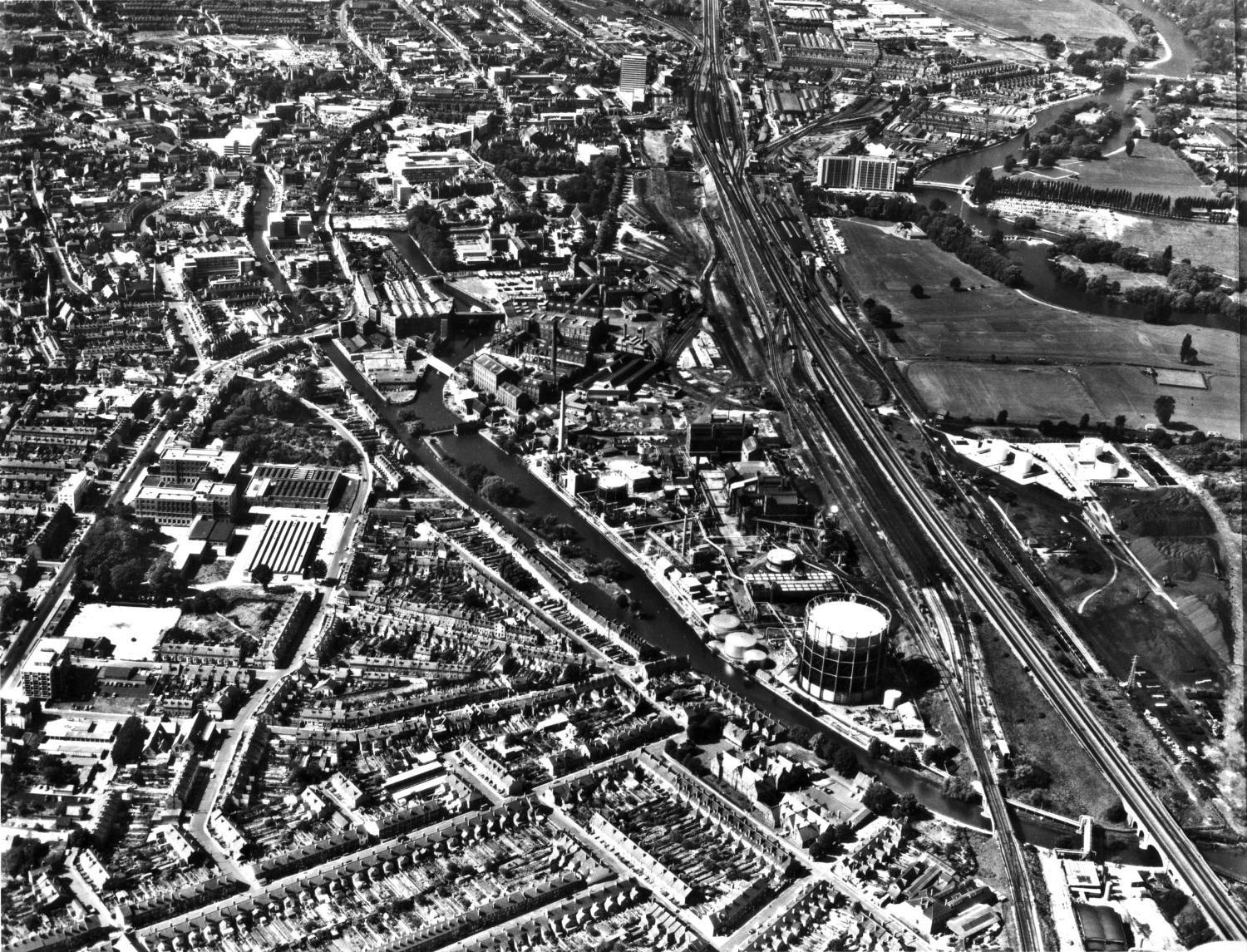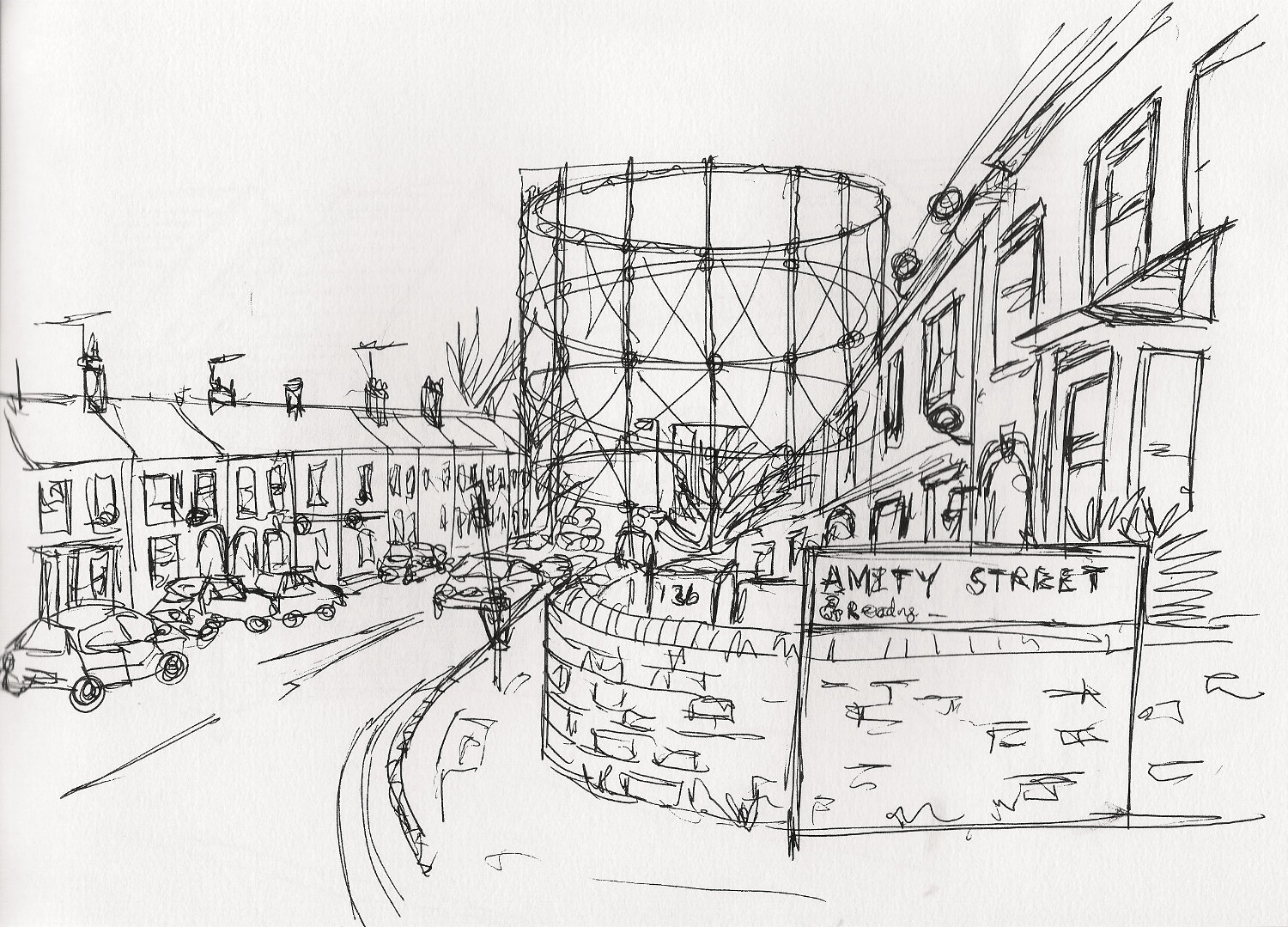This print of about 1870 shows the Reading Gas Company's works in the centre of the view on the north bank of the River Kennet, with the the Seven Bridges Brewery of H&G Simonds on the left (which was designed by Sir John Soane), and the tail-race of St Giles' Mill bottom right and the High Bridge to the right.
The Reading Gas Company was formed in 1818 and on 5 November 1819 (Bonfire Night!) the main streets of Reading were lit by gas for the first time. The new gas lamps were considered to be 'not only ornamental but a great protection against noctornal depredators'. However by the 1830s there were widespread complaints about the quality of the lighting, leading to the formation of the rival Reading Union Gas Company with its new gasworks just off the Kings Road in the east of the town, also beside the River Kennet. This new competition led to cheaper prices and better service for customers including an expansion in street lighting.
Reference: W.M. Childs, reprinted 1967, Reading During the Early Part of the Nineteenth Century
Lithograph print, museum object no. 1974.472.1
